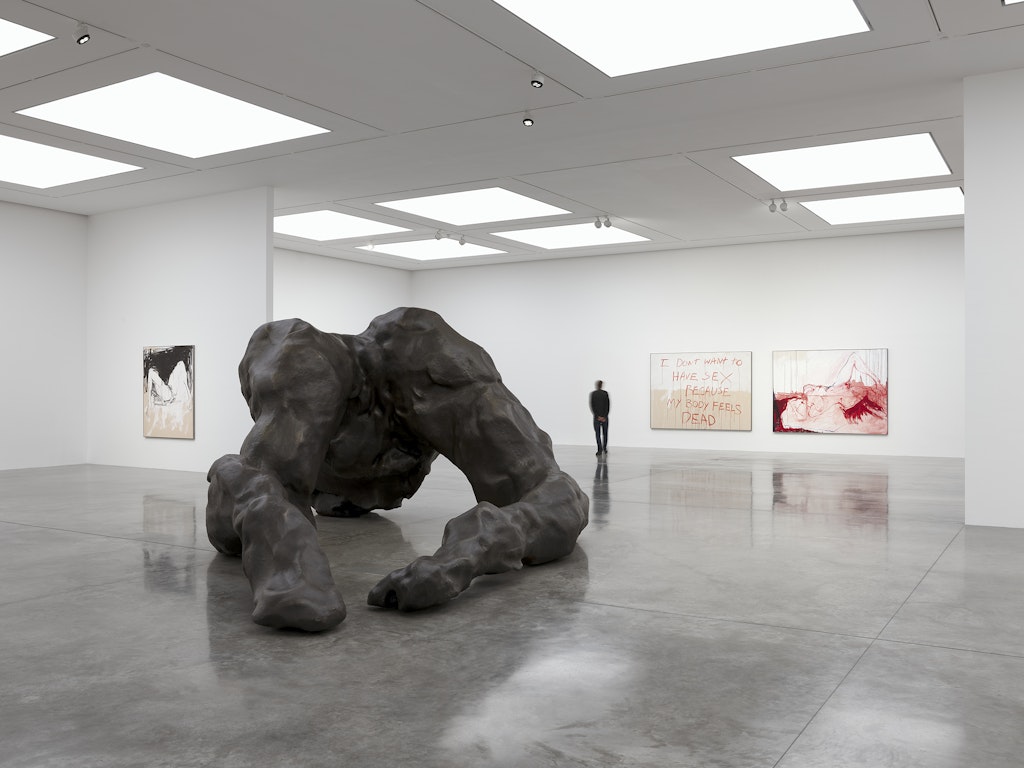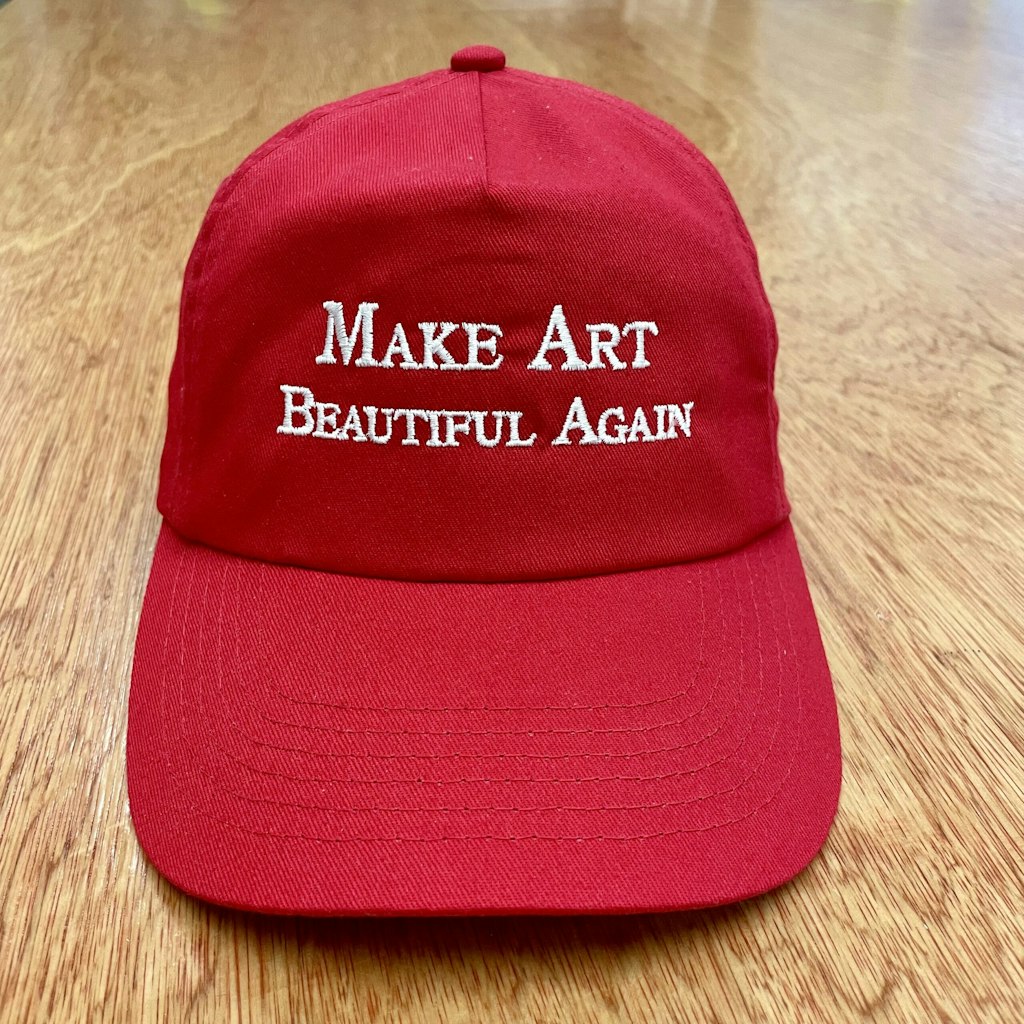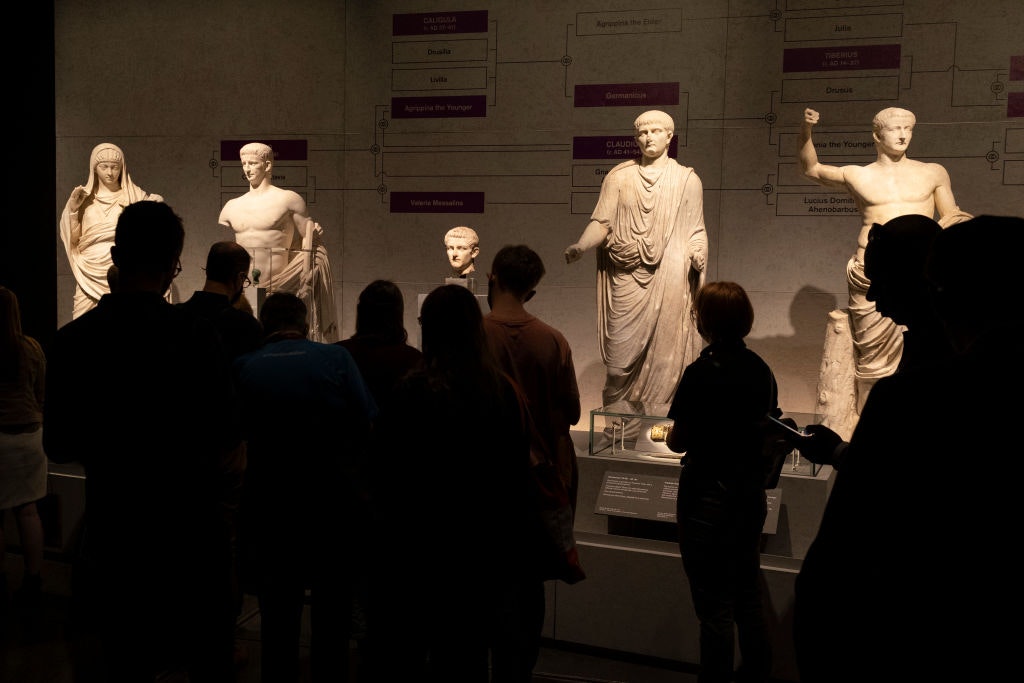Advertisements for themselves
Michael Craig-Martin and the sad afterlife of conceptual art
Few works in the history of British art illustrate the divorce of aesthetics and meaning as clearly as Michael Craig-Martin’s 1973 An Oak Tree. Placing a glass of water on a transparent shelf, the artist proclaimed it to be an oak tree. “I didn’t change its appearance. But it’s not a glass of water. It’s an oak tree”, he explained in an interview that accompanies the display.
This installation defines Craig-Martin’s early practice. It is thus unavoidably the opening work in the octogenarian’s quasi-retrospective at the Royal Academy. “Quasi” because although the show presents both the artist’s acute conceptualism and his later obsession with the painterly representation of everyday objects, it is haunted by an irrecoverable rift with art history. In this, it fails to explain an artist’s practice in conflict with itself.
In the first three decades of his career, Craig-Martin produced works that might be described as riddles. He made boxes that would never close because he had attached their lids the wrong way around. He reconfigured the elements of a mass-produced shelf set to highlight its potential incompleteness. 1970’s On the Table had four metal buckets suspended by rope on a floating table, as though it was the steel that made the entire assembly weightless. He also experimented with neon, creating light drawings whose components flickered to alter their composition.

An Oak Tree continued where Marcel Duchamp left off calling his urinal ready-made Fountain a work of art in 1917. It is, however, much more than this. An Oak Tree does not try to elevate the glass, water, or even the language that constitute it into a museum-worthy object. Rather, it suggests that an artist can change the true nature of things simply through the power of his will, without the need for an aesthetic gesture.
These works are frustrating today because, with them, art entirely abdicated what authority it had over the meaning of signs. The 1970 wall installation Conviction, for example, consists of eight small, rectangular mirrors in which one must catch oneself trying to read their handwritten captions. It ends with “I understand why I am as I am.” This is a kind of sentiment which many viewers today may parrot while scrambling to situate the source of this confidence.
Craig-Martin continued to experiment with ready-mades, at one point creating hangings of household window blinds as analogues to painting. The series Painting and Picturing from the late 1970s subtly foreshadows the problem he would face in his later turn to representation. These assemblies use traditional easel paintings — oil still lives that depict a book, a bowl, or an apple with a realism that is absent in the artist’s more familiar oeuvre — as the ready-made. Craig-Martin embedded these pictures, each no more than a dozen inches in size, in the corners of much larger canvases. In most of these assemblies, the panels are primed but otherwise entirely unmarked.
Painting and Picturing divorces art and representation entirely. These assemblies foregrounded thought and relegated the art object to the status of mere apparatus. They are an attempt to make an art without, if not against art. In its shadow, Craig-Martin’s turn to the painterly depiction of the everyday in the early 1990s is deeply puzzling. Having first disowned the object, the artist later proposed that objecthood was all that mattered.

The track change was a smart move. It’s hard to deny Craig-Martin’s role in elevating the style of industrial design illustration synonymous today with Apple products and monochrome pictographs. His lines and rich purple, green, and red acrylics adorn building façades and walls of libraries and arts centres. When asked to imagine a cartoon drawing of a desk fan or a wristwatch, one would likely think up a Craig-Martin.
This practice has suffered diminishing returns, however. When dozens of expansive acrylic panels fill the Academy’s galleries, the result is suffocating. Room after room, compositions of line-perfect corkscrews, filing cabinets, chairs, and umbrellas fight for the viewer’s attention like the colour patterns of a children’s playground. Whenever the eye rests on one, a game of guess-the-context begins. Is this design a chair from the ‘90s? Is that an iPhone 12, or an earlier model? Does this assembly of a pencil sharpener, a pair of sunglasses, and a leather belt refer to some consequential reality?
Craig-Martin’s object paintings are drunk on the frictionless consumerism that hollowed out British culture around the turn of the millennium. One might suggest in their defence that these compositions of garish colours and exaggerated scale were somehow critiques, rather than facile endorsements. There could, even, be an honourable Platonism to Craig-Martin’s attempt to define the fundamental characteristics of things by representing the light bulb, the laptop, or the coffee cup in his clip-art, denatured colours. But this is difficult to appreciate because, in his earlier work, the artist denied that objects needed a form at all. In the vein of conceptualism that functions only in the artist’s mind which Craig-Martin embraced earlier, his pseudo-luxury objects are advertisements only for themselves.
There are signs in the exhibition that Craig-Martin began to doubt the sustainability of his project in the 2000s. Having earlier outright denied the need for reference and context, he started inserting allusions to art history into his by-then trademark line-painting style. That panel with sunglasses and a leather belt from 2001? That’s cryptically Velázquez’s Las Meninas, although one wouldn’t guess it without the curator’s explanation. Craig-Martin later remade Manet’s barmaid and picnic paintings, and Seurat’s bathers, this time introducing representations of the human figure. His hand at those is clumsy and the colour palette brings no new life to them. Retreating into the safety of the object, Craig-Martin painted an acrylic copy of Duchamp’s seminal sculpture Large Glass in 2023.
This is all too little, too late. These “art history” paintings do not breach the parameters of Craig-Martin’s earlier practice which disintegrated into a gimmick. And the artist knows this. A 3-metre-wide text panel from 2010 screams “PAINTING” desperately, as though to assert Craig-Martin’s position in the canon. An Oak Tree secures it. The paintings will serve as a warning.
The exhibition continues at the Royal Academy until 10 December.
Enjoying The Critic online? It's even better in print
Try five issues of Britain’s most civilised magazine for £10
Subscribe














